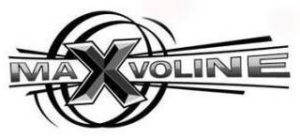Ashland Licensing (owner of the mark VALVOLINE) petitioned to cancel two registrations for the markMAXOLINE, in standard and design forms, for “lubricants for automobiles,” within five years of issuance of each of the registrations, on the grounds of likelihood of confusion and abandonment. After the five-year anniversary dates, Ashland filed a motion to add a claim for nonuse. The Board ruled that the commencement of a cancellation proceeding tolls Trademark Act Section 14 for the purpose of adding claims against a challenged registration. Ashland Licensing & Intellectual Property LLC v. Sunpoint International Group USA Corp., Cancellation No. 92057294 (June 7, 2016) [precedential].

Section 14: Section 14 of the Lanham Act provides that, prior to the fifth anniversary date of a registration, a party may plead any ground for cancellation of a registration. However, a petition to cancel after that date must be restricted to certain grounds enumerated in Section 14 (genericness, fraud, abandonment, functionality, and a few others). Nonuse is not one of the enumerated exceptions.
In The Williamson-Dickie Mfg. Co. v. Mann Overall Co., 359 F.2d 450, 149 USPQ 518 (CCPA 1966), the CCPA ruled that in an opposition filed prior to the fifth anniversary of the opposer’s pleaded registration, Section 14 does not bar a Section 2(d) counterclaim to cancel the pleaded registration even though more than five years had then passed since issuance of the registration.
The Board found that the issue in this case “presents a variation on the same theme,” and it held that “so long as the cancellation proceeding commences within five years of the date of registration, the five-year limitation under Trademark Act Section 14 is tolled by the commencement of a cancellation action for the purpose of adding claims against the registration by that petitioner.”
The Board observed that its ruling “will aid the Board in its work.” If tolling were not allowed, that might discourage settlement discussions between the parties, and it might encourage “foot-dragging” during discovery by a party “who finds the risk of a motion to compel may be less than the potential risk of additional claims.”
In sum, the petitioner who learns of further grounds for cancellation, and acts without undue delay, may seek to add those grounds, even if the subject registration has passed its fifth anniversary during the pendency of the cancellation proceeding. With this decision we see no contravention of the legislative purpose of Trademark Act Section 14 in limiting the risk of cancellation of registrations. A petition to cancel has been filed before the five-year anniversary date of the registration, and so the registration already is at risk. To hold that the availability of additional claims will vary with the speed with which petitioner obtains discovery responses jeopardizes the Board’s orderly disposition of its cases.
Timeliness of Motion: The Board next examined whether Petitioner Ashland acted in a timely fashion. Ashland maintained that it learned of the facts supporting the nonuse claim during a June 10, 2014 deposition, and thus the information was not known to Ashland at the time of filing the petition for cancellation. Respondent contended that the proposed amendment was untimely since Ashland did not bring its motion until almost one year later. The Board, however, noted that proceedings “largely were suspended, or there was good cause to believe that proceedings would be suspended, from the time Petitioner learned of the new information.” And so the Board ruled that Ashland did not unduly delay in bringing its motion to amend.
Proper Pleading: Finally, the Board pointed out that Ashland had not properly pleaded its nonuse claim. Ashland alleged that the registered marks were not in use at the time of filing of the underlying applications. However, the applications were filed under Section 1(b), based on intent to use, and so no use was required prior to filing.
The Board pointed out that in an inter partes proceeding, the Board will consider evidence of use that occurred after the filing of the statement of use but within the original or extended period for filing the statement of use. Embarcadero Techs., Inc. v. Delphix Corp., 117 USPQ2d 1518, 1523 (TTAB 2016). Therefore a proper allegation of nonuse should state that the marks were not in use as of those later dates. The Board allowed Ashland 15 days to file an amended petition for cancellation.

